The Trypanocidal Activity of Naphthoquinones: A Review
Abstract
:Introduction
Napththoquinones as Privileged Molecules
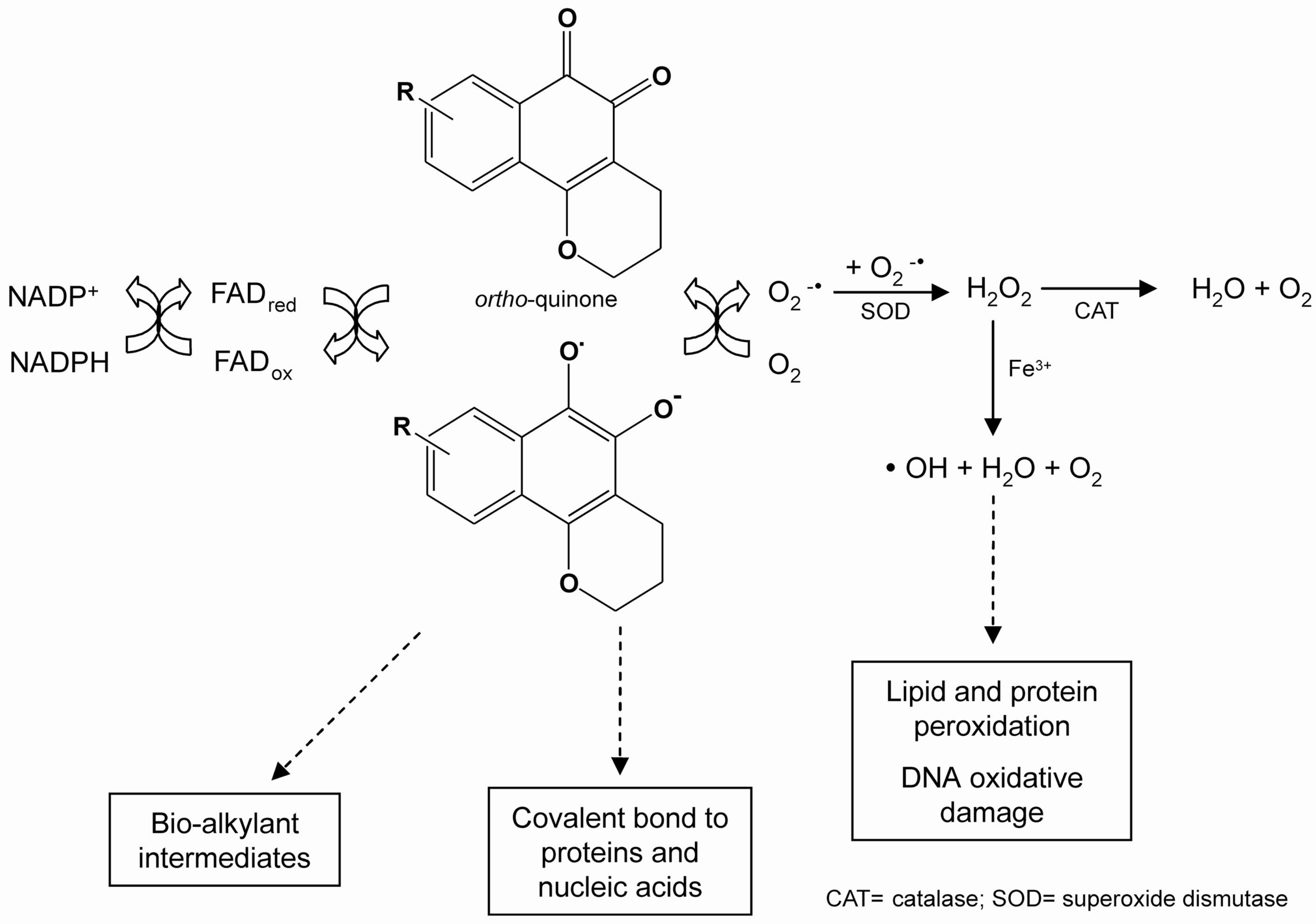
Biological Activity of β-Lapachone

Chagas Disease, a Neglected Disease

Trypanocidal Activity of β-Lapachone and Naphthoquinone Derivatives

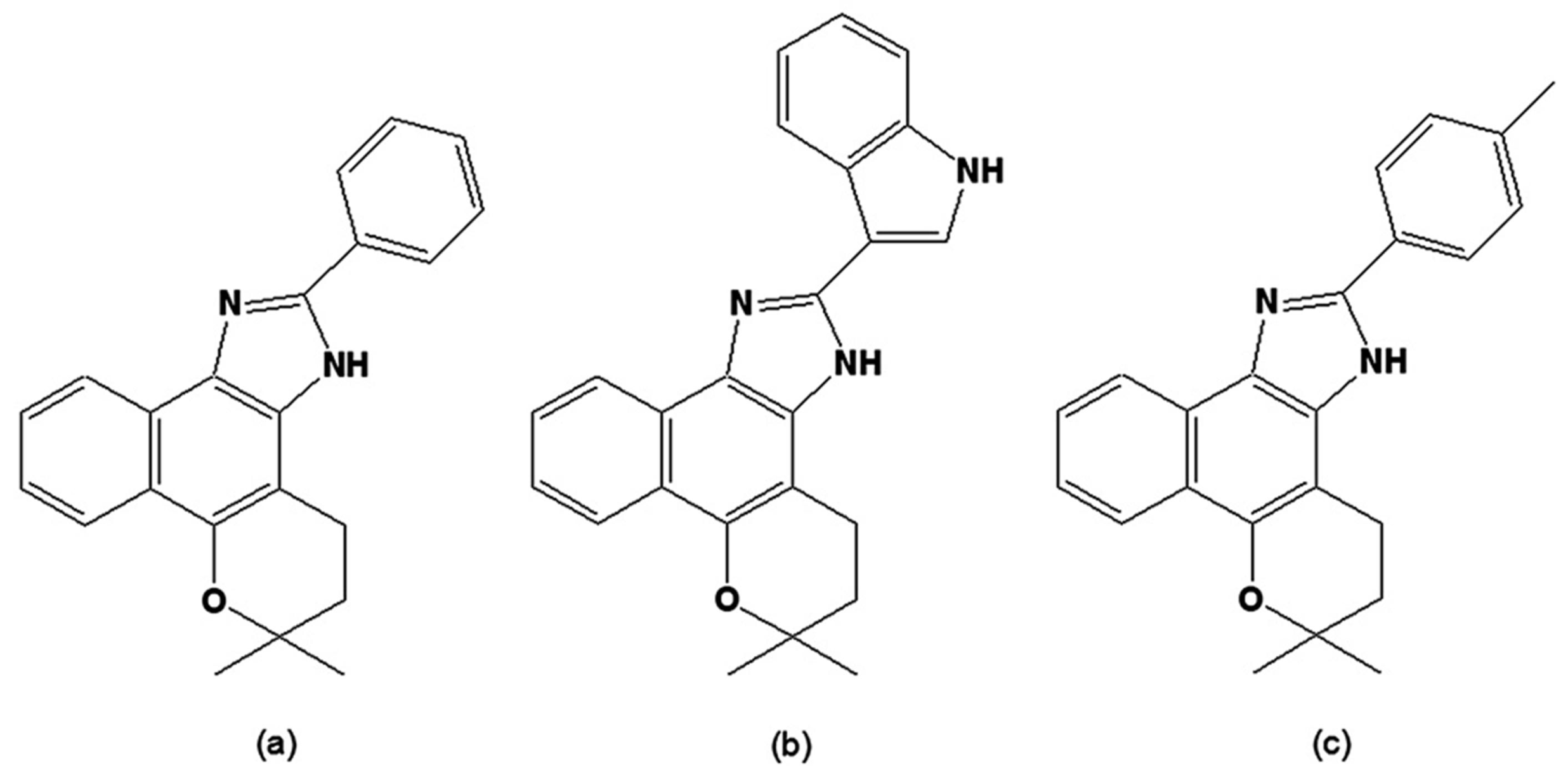
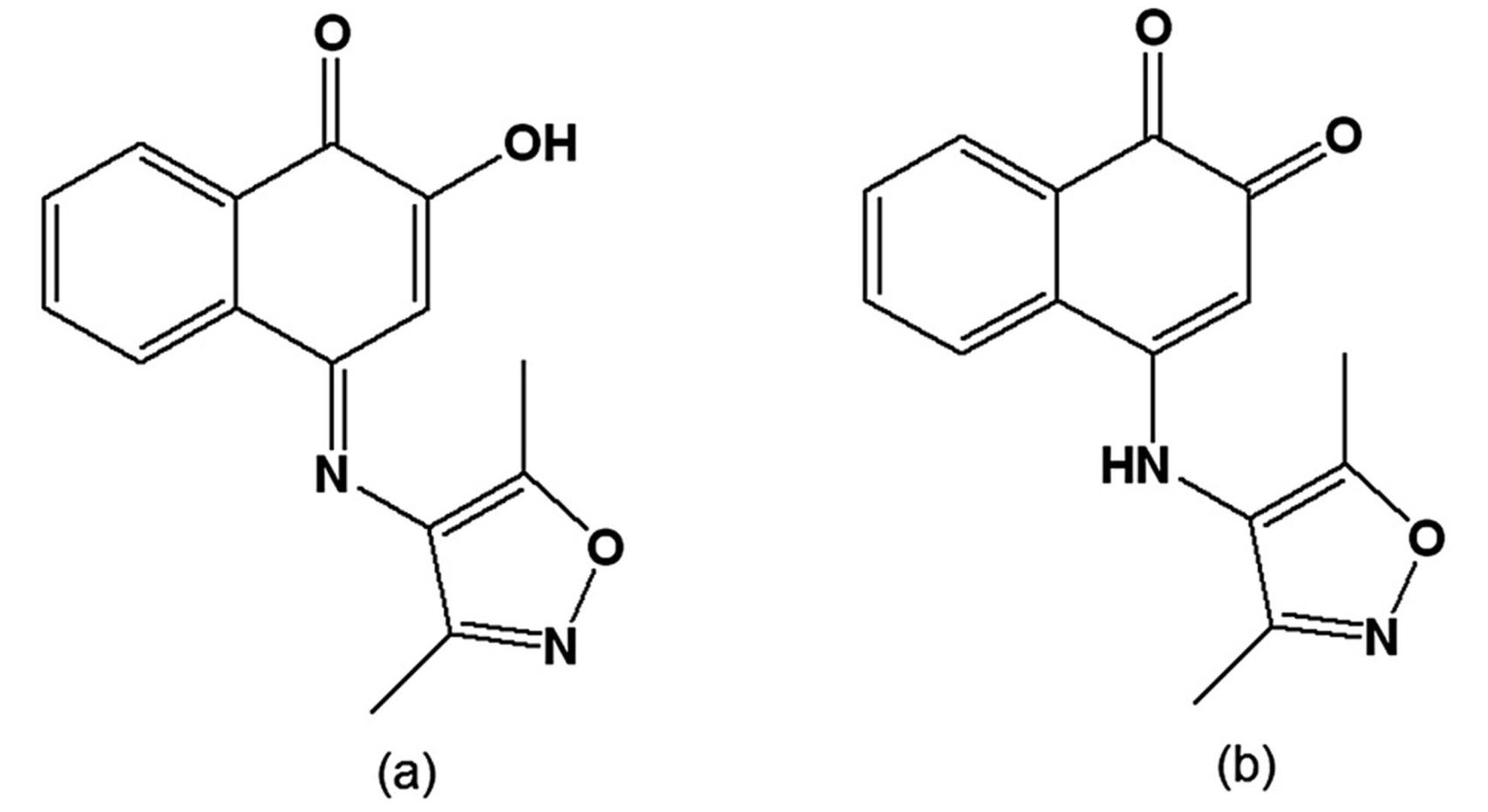
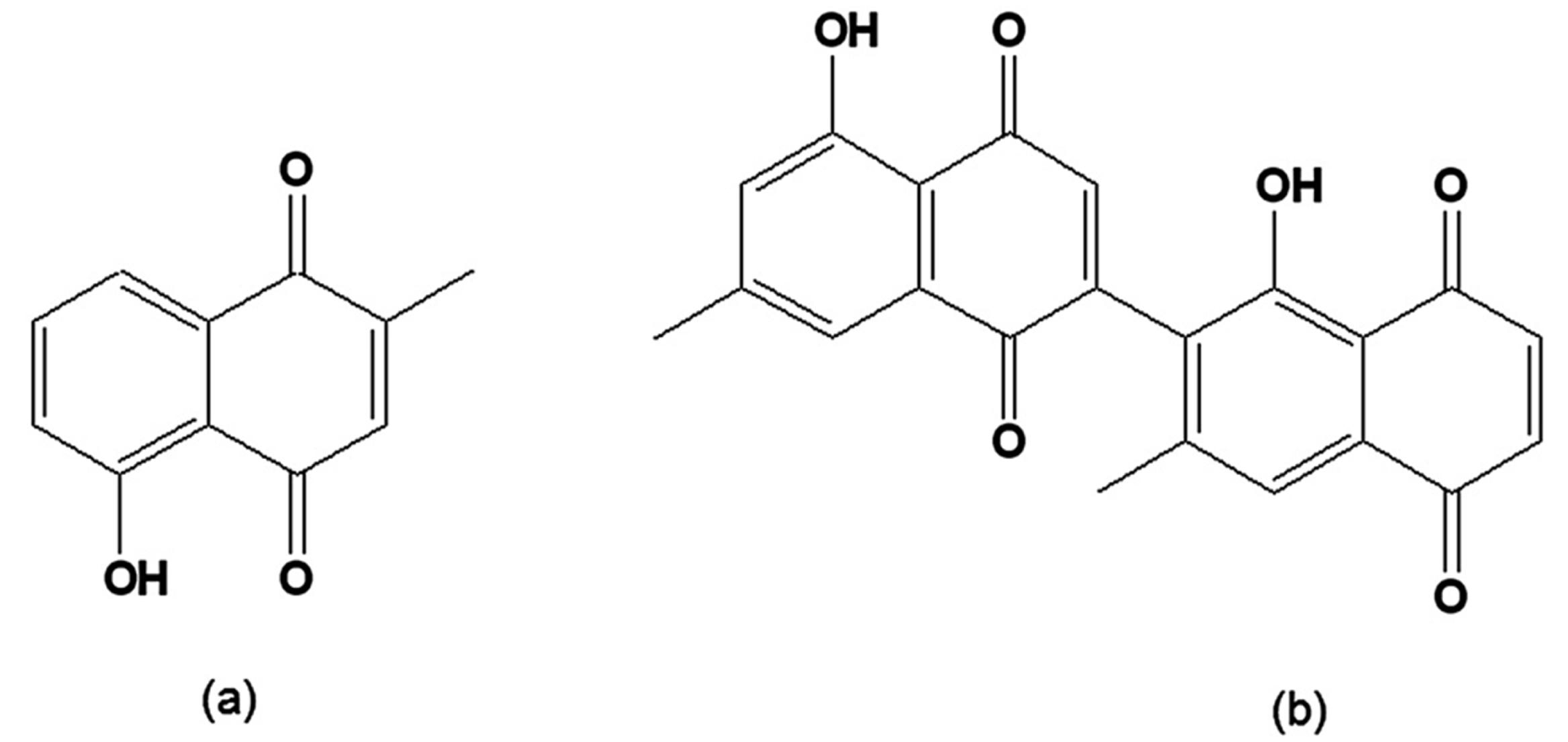



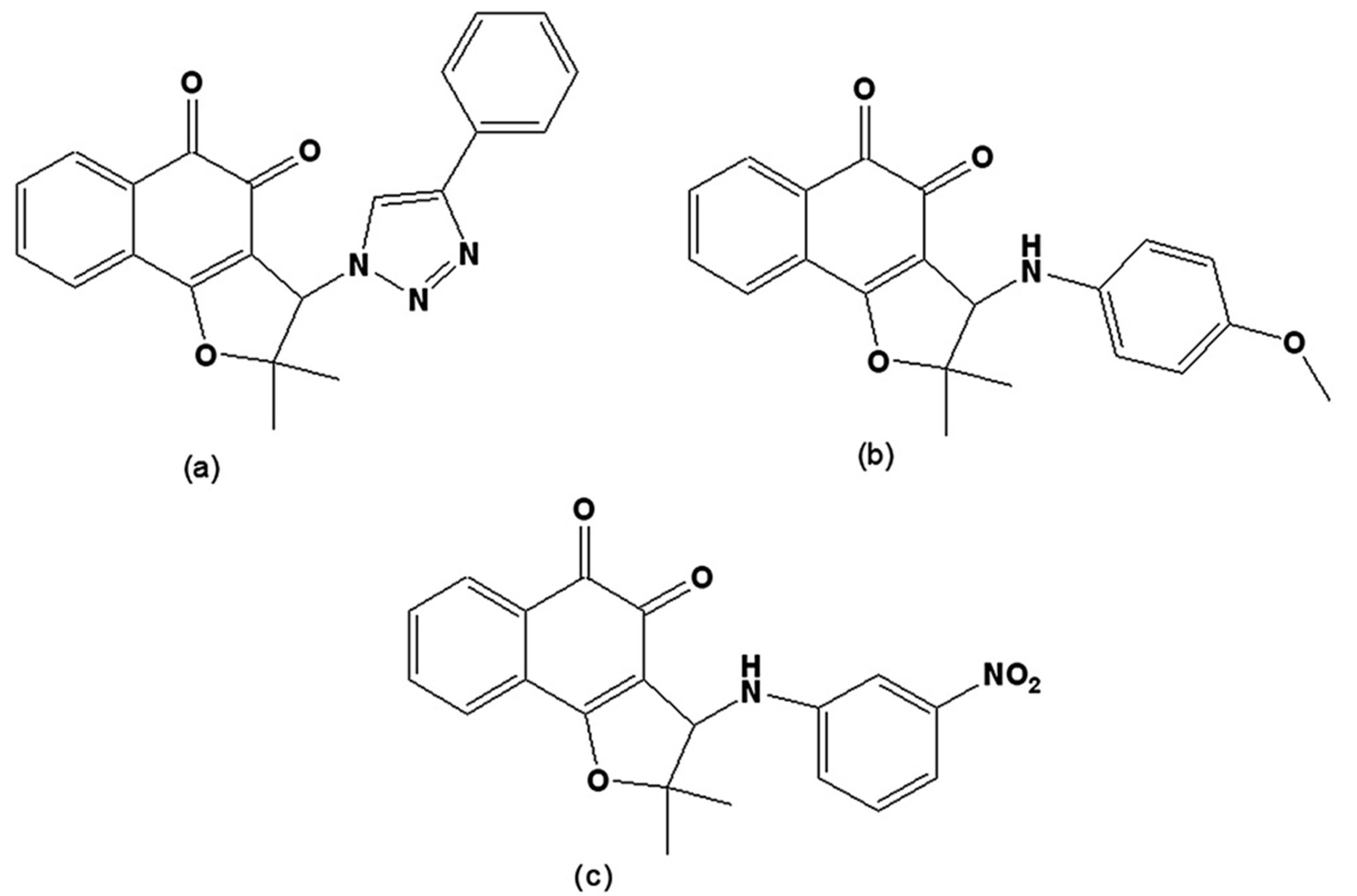

Acknowledgments
- Sample Availability: Samples of the compounds N1, N2 and N3 are available from the authors.
References
- Newman, D.J.; Cragg, G.M.; Snader, K.M. The influence of natural products upon drug discovery. Nat. Prod. Rep. 2000, 17, 215–234. [Google Scholar] [CrossRef]
- Ernst, E. The efficacy of herbal medicine: An overview. Fundam. Clin. Pharmacol. 2005, 19, 405–409. [Google Scholar] [CrossRef]
- Soejarto, D.D.; Farnsworth, N.R. Tropical rain forests: Potential source of new drugs? Perspect. Biol. Med. 1989, 32, 244–256. [Google Scholar]
- Raskin, I.; Ribnicky, D.M.; Komarnytsky, S.; Ilic, N.; Poulev, A.; Borisjuk, N.; Brinker, A.; Moreno, D.A.; Ripoll, C.; Yakoby, N.; O'Neal, J.M.; Cornwell, T.; Pastor, I.; Fridlender, B. Plants and human health in the twenty-first century. Trends Biotechnol. 2002, 20, 522–531. [Google Scholar] [CrossRef]
- Foster, B.C.; Arnason, J.T.; Briggs, C.J. Natural health products and drug disposition. Annu. Rev. Pharmacol. Toxicol. 2005, 45, 203–226. [Google Scholar] [CrossRef]
- Horton, D.A.; Bourne, G.T.; Smythe, M.L. The combinatorial synthesis of bicyclic privileged structures or privileged substructures. Chem. Rev. 2003, 103, 893. [Google Scholar] [CrossRef]
- Newman, D.J.; Cragg, G.M. Natural products as sources of new drugs over the last 25 years. J. Nat. Prod. 2007, 70, 461–477. [Google Scholar] [CrossRef]
- Butler, M.S. Natural products to drugs: Natural product-derived compounds in clinical trials. Nat. Prod. Rep. 2008, 25, 475–516. [Google Scholar] [CrossRef]
- Tagboto, S.; Townson, S. Antiparasitic properties of medicinal plants and other naturally occurring products. Adv. Parasitol. 2001, 50, 199–295. [Google Scholar] [CrossRef]
- Constantino, L.; Barlocco, D. Privileged structures as leads in medicinal chemistry. Curr. Med. Chem. 2006, 13, 65–85. [Google Scholar] [CrossRef]
- Powis, G. Metabolism and reactions of quinoid anticancer agents. Pharmacol. Ther. 1987, 35, 57–162. [Google Scholar] [CrossRef]
- O’Brien, P.J. Molecular mechanisms of quinone cytotoxicity. Chem. Biol. Interact. 1991, 80, 1–41. [Google Scholar] [CrossRef]
- Abreu, F.C.; Ferraz, P.A.; Goulart, M.O. Some applications of electrochemistry in biomedical chemistry. Emphasis on the correlation of electrochemical and bioactive properties. J. Braz. Chem. Soc. 2002, 13, 19–35. [Google Scholar] [CrossRef]
- Hillard, E.A.; Abreu, F.C.; Ferreira, D.C.; Jaouen, G.; Goulart, M.O.; Amatore, C. Electrochemical parameters and techniques in drug development, with an emphasis on quinones and related compounds. Chem. Commun. 2008, 23, 2612–2628. [Google Scholar]
- Arenas, P. Medicine and magic among the Maka Indians of the Paraguayan Chaco. J. Ethnopharmacol. 1987, 21, 279–295. [Google Scholar] [CrossRef]
- Bastien, J.W. Pharmacopeia of Qollahuaya Andeans. J. Ethnopharmacol. 1983, 8, 97–111. [Google Scholar] [CrossRef]
- Hazra, B.; Das Sarma, M.; Sanyal, U. Separation methods of quinonoid constituents of plants used in Oriental traditional medicines. J. Chromatogr. B Analyt. Technol. Biomed. Life Sci. 2004, 812, 259–275. [Google Scholar]
- Vilamil-Fernandez, S.; Stoppani, A.O.; Dubin, M. Redox cycling of β-lapachone and structural analogues in microsomal and cytosol liver preparations. Methods Enzymol. 2004, 378, 67–87. [Google Scholar] [CrossRef]
- Ross, D.; Siegel, D. NAD(P)H: Quinone oxidoreductase 1 (NQO1, DT-diaphorase), functions and pharmacogenetics. Methods Enzymol. 2004, 382, 115–144. [Google Scholar] [CrossRef]
- Munday, R.; Smith, B.L.; Munday, C.M. Structure-activity relationships in the haemolytic activity and nephrotoxicity of derivatives of 1,2- and 1,4-naphthoquinone. J. Appl. Toxicol. 2007, 27, 262–269. [Google Scholar] [CrossRef]
- Munday, R. Autoxidation of naphtohydroquinones: Effects of pH, naphthoquinones and superoxide dismutase. Free Rad. Res. 2000, 32, 245–253. [Google Scholar] [CrossRef]
- Monks, T.J.; Jones, D.C. The metabolism and toxicity of quinones, quinonimines, quinone methides, and quinone-thioethers. Curr. Drug Metab. 2002, 3, 425–438. [Google Scholar] [CrossRef]
- Bolton, J.L.; Trush, M.A.; Penning, T.M.; Dryhurst, G.; Monks, T.J. Role of quinones in toxicology. Chem. Res. Toxicol. 2000, 13, 135–160. [Google Scholar] [CrossRef]
- Brunmark, A.; Cadenas, E. Redox and addition chemistry of quinoid compounds and its biological implications. Free. Rad. Biol. Med. 1989, 7, 435–477. [Google Scholar] [CrossRef]
- Monks, T.J.; Hanslik, R.P.; Cohen, G.M.; Ross, D.; Graham, D.G. Quinone chemistry and toxicity. Toxicol. Appl. Pharmacol. 1992, 112, 2–16. [Google Scholar] [CrossRef]
- Goulart, M.O.; Falkowski, P.; Ossowski, T.; Liwo, A. Electrochemical study of oxygen interaction with lapachol and its radical anions. Bioelectrochemistry 2003, 59, 85–87. [Google Scholar] [CrossRef]
- Vilamil-Fernandez, S.; Stoppani, A.O.; Dubin, M. Redox cycling of β-lapachone and structural analogues in microsomal and cytosol liver preparations. Methods Enzymol. 2004, 378, 67–87. [Google Scholar] [CrossRef]
- Hussain, H.; Krohn, K.; Uddin Ahmad, V.U.; Miana, G.A.; Greend, I.R. Lapachol: An overview. Arkivoc 2007, 2, 145–171. [Google Scholar]
- Santana, C.F.; Lima, O.; d'Albuquerque, I.L.; Lacerda, A.L.; Martins, D.G. Antitumoral and toxicological properties of extracts of bark and various wood components of pau d'arco (Tabebuia avellanedae). Rev. Inst. Antibiot. 1968, 8, 89–94. [Google Scholar]
- Li, C.J.; Wang, C.; Pardee, A.B. Induction of apoptosis by β-lapachone in human prostate cancer cells. Cancer Res. 1995, 55, 3712–3715. [Google Scholar]
- Planchon, S.M.; Wuerzberger, S.; Frydman, B.; Witiak, D.T.; Hutson, P.; Church, D.R.; Wilding, G.; Boothman, D.A. β-lapachone-mediated apoptosis in human promyelocytic leukemia (HL-60) and human prostate cancer cells: A p53-independent response. Cancer Res. 1995, 55, 3706–3711. [Google Scholar]
- Wuerzberger, S.M.; Pink, J.J.; Planchon, S.M.; Byers, K.L.; Bornmann, W.G.; Boothman, D.A. Induction of apoptosis in MCF-7: WS8 breast cancer cells by β-lapachone. Cancer Res. 1998, 58, 1876–1885. [Google Scholar]
- Dubin, M.; Fernandez Villamil, S.H.; Stoppani, A.O. Cytotoxicity of β-lapachone, a naphthoquinone with possible therapeutic use. Medicina 2001, 61, 343–350. [Google Scholar]
- Planchon, S.M.; Pink, J.J.; Tagliarino, C.; Bornmann, W.G.; Varnes, M.E.; Boothman, D.A. Lapachone-induced apoptosis in human prostate cancer cells: Involvement of NQO1/xip3. Exp. Cell. Res. 2001, 267, 95–106. [Google Scholar] [CrossRef]
- Ough, M.; Lewis, A.; Bey, E.A.; Gao, J.; Ritchie, J.M.; Bornmann, W.; Boothman, D.A.; Oberley, L.W.; Cullen, J.J. Efficacy of β-lapachone in pancreatic cancer treatment: Exploiting the novel, therapeutic target NQO1. Cancer Biol. Ther. 2005, 4, 95–102. [Google Scholar] [CrossRef]
- Bey, E.A.; Bentle, M.S.; Reinicke, K.E.; Dong, Y.; Yang, C.R.; Girard, L.; Minna, J.D.; Bornmann, W.G.; Gao, J.; Boothman, D.A. An NQO1- and PARP-1-mediated cell death pathway induced in non-small-cell lung cancer cells by β-lapachone. Proc. Natl. Acad. Sci. USA 2007, 104, 11832–11837. [Google Scholar]
- Choi, E.K.; Terai, K.; Ji, I.M.; Kook, Y.H.; Park, K.H.; Oh, E.T.; Griffin, R.J.; Lim, B.U.; Kim, J.S.; Lee, D.S.; Boothman, D.A.; Loren, M.; Song, C.W.; Park, H.J. Upregulation of NAD(P)H: Quinone oxidoreductase by radiation potentiates the effect of bioreductive β-lapachone on cancer cells. Neoplasia 2007, 8, 634–642. [Google Scholar]
- Bentle, M.S.; Bey, E.A.; Dong, Y.; Reinicke, K.E.; Boothman, D.A. New tricks for old drugs: The anticarcinogenic potential of DNA repair inhibitors. J. Mol. Histol. 2006, 37, 203–218. [Google Scholar] [CrossRef]
- Li, C.J.; Li, Y.Z.; Pinto, A.V.; Pardee, A.B. Potent inhibition of tumor survival in vivo by β-lapachone plus taxol: Combining drugs imposes different artificial checkpoints. Proc. Natl. Acad. Sci. USA 1999, 96, 13369–13374. [Google Scholar] [CrossRef]
- Kumi-Diaka, J.; Saddler-Shawnette, S.; Aller, A.; Brown, J. Potential mechanism of phytochemical-induced apoptosis in human prostate adenocarcinoma cells: Therapeutic synergy in genistein and β-lapachone combination treatment. Cancer Cell. Int. 2004, 4, 5–14. [Google Scholar] [CrossRef]
- Boothman, D.A.; Pardee, A.B. Inhibition of radiation-induced neoplastic transformation by β-lapachone. Proc. Natl. Acad. Sci. USA 1989, 86, 4963–4967. [Google Scholar] [CrossRef]
- Li, C.J.; Averboukh, L.; Pardee, A.B. β-Lapachone, a novel DNA topoisomerase I inhibitor with a mode of action different from camptothecin. J. Biol. Chem. 1993, 268, 22463–22468. [Google Scholar]
- Pommier, Y. Diversity of DNA topoisomerases I and inhibitors. Biochimie 1998, 80, 255–270. [Google Scholar] [CrossRef]
- Frydman, B.; Marton, L.J.; Sun, J.S.; Neder, K.; Witiak, D.T.; Liu, A.A.; Wang, H.M.; Mao, Y.; Wu, H.Y.; Sanders, M.M.; Liu, L.F. Induction of DNA topoisomerase II-mediated DNA cleavage by β-lapachone and related naphthoquinones. Cancer Res. 1997, 57, 620–627. [Google Scholar]
- Neder, K.; Marton, L.J.; Liu, L.F.; Frydman, B. Reaction of β-lapachone chone and related naphthoquinones with 2-mercaptoethanol: A biomimetic model of topoisomerase II poisoning by quinones. Cell. Mol. Biol. 1998, 44, 465–474. [Google Scholar]
- Krishnan, P.; Bastow, K.F. Novel mechanism of cellular DNA topoisomerase II inhibition by the pyranonaphthoquinone derivatives α-lapachone and β-lapachone. Cancer. Chemother. Pharmacol. 2001, 47, 187–198. [Google Scholar] [CrossRef]
- Pink, J.J.; Planchon, S.M.; Tagliarino, C.; Varnes, M.E.; Siegel, D.; Boothman, D.A. NAD(P)H: Quinone oxidoreductase activity is the principal determinant of β-lapachone cytotoxicity. J. Biol. Chem. 2000, 275, 5416–5424. [Google Scholar]
- Pardee, A.B.; Li, Y.Z.; Li, C.J. Cancer therapy with beta-lapachone. Curr. Cancer Drug Targets 2002, 2, 227–242. [Google Scholar] [CrossRef]
- Hotez, P.J.; Molyneux, D.H.; Fenwick, A.; Kumaresan, J.; Sachs, S.E.; Sachs, J.D.; Savioli, L. Control of neglected tropical diseases. N. Engl. J. Med. 2007, 357, 1018–1027. [Google Scholar] [CrossRef]
- Chirac, P.; Torreele, E. Global framework on essential health R & D. Lancet. 2006, 367, 1560–1561. [Google Scholar]
- Reddy, M.; Gill, S.S.; Kalkar, S.R.; Wu, W.; Anderson, P.J.; Rochon, P.A. Oral drug therapy for multiple neglected tropical diseases: A systematic review. JAMA 2007, 298, 1911–1924. [Google Scholar] [CrossRef]
- Trouiller, P.; Olliaro, P.; Torreele, E.; Orbinski, J.; Laing, R.; Ford, N. Drug development for neglected diseases: A deficient market and a public-health policy failure. Lancet 2002, 359, 2188–2194. [Google Scholar]
- WHO, The World Health Report; World Health Organization: Geneva, Switzerland, 2002.
- Chagas, C. Nova tripanosomíase humana. Estudos sobre a morfologia e o ciclo evolutivo de Schizotrypanum cruzi gen. nov. sp. nov., agente etiológico de nova entidade mórbida do homem. Mem. Inst. Oswaldo Cruz 1909, 1, 159–218. [Google Scholar] [CrossRef]
- Rocha, M.O.; Teixeira, M.M.; Ribeiro, A.L. An update on the management of Chagas cardiomyopathy. Expert Rev. Anti-Infect. Ther. 2007, 5, 727–743. [Google Scholar] [CrossRef]
- Brener, Z.; Andrade, Z.; Barral-Netto, M. Trypanosoma cruzi e doença de Chagas. Guanabara Koogan: Rio de Janeiro, Brazil, 1999; p. 431. [Google Scholar]
- Dias, J.C. Globalization, inequity and Chagas disease. Cad. Saúde Pública 2007, 23 Suppl, S13–S22. [Google Scholar] [CrossRef]
- Carlier, Y. Congenital Chagas disease: From the laboratory to public health. Bull. Acad. R. Med. Belg. 2007, 162, 409–416. [Google Scholar]
- Herwaldt, B.L. Laboratory-acquired parasitic infections from accidental exposures. Clin. Microbiol. Rev. 2001, 14, 659–688. [Google Scholar] [CrossRef]
- Atclas, J.D.; Barcan, L.; Nagel, C.; Lattes, R.; Riarte, A. Organ transplantation and Chagas disease. JAMA 2008, 299, 134–135. [Google Scholar]
- Campos, S.V.; Strabelli, T.M.; Amato Neto, V.; Silva, C.P.; Bacal, F.; Bocchi, E.A.; Stolf, N.A. Risk factors for Chagas' disease reactivation after heart transplantation. J. Heart Lung Transplant. 2008, 27, 597–602. [Google Scholar] [CrossRef]
- Shikanai-Yasuda, M.A.; Marcondes, C.B.; Guedes, L.A.; Siqueira, G.S.; Barone, A.A.; Dias, J.C.; Amato-Neto, V.; Tolezano, J.E.; Peres, B.A.; Arruda, E.R., Jr. Possible oral transmission of acute Chagas' disease in Brazil. Rev. Inst. Med. Trop. São Paulo 1991, 33, 351–357. [Google Scholar] [CrossRef]
- Steindel, M.; Kramer Pacheco, L.; Scholl, D.; Soares, M.; Moraes, M.H.; Eger, I.; Kosmann, C.; Sincero, T.C.; Stoco, P.H.; Murta, S.M.; de Carvalho-Pinto, C.J.; Grisard, E.C. Characterization of Trypanosoma cruzi isolated from humans, vectors, and animal reservoirs following an outbreak of acute human Chagas disease in Santa Catarina State, Brazil. Diagn. Microbiol. Infect. Dis. 2008, 60, 25–32. [Google Scholar] [CrossRef]
- Vaidian, A.K.; Weiss, L.M.; Tanowitz, H.B. Chagas' disease and AIDS. Kinetoplastid Biol. Dis. 2004, 3, 2. [Google Scholar] [CrossRef] [Green Version]
- Schmunis, G.A. Epidemiology of Chagas disease in non-endemic countries: The role of international migration. Mem. Inst. Oswaldo Cruz 2007, 102 Suppl. 1, 75–85. [Google Scholar] [CrossRef]
- Moncayo, A.; Ortiz-Yanine, M.I. An update on Chagas disease (human American trypanosomiasis). Ann. Trop. Med. Parasitol. 2006, 100, 663–677. [Google Scholar] [CrossRef]
- Coura, J.R.; De Castro, S.L. A critical review on Chagas disease chemotherapy. Mem. Inst. Oswaldo Cruz 2002, 97, 3–24. [Google Scholar]
- Soeiro, M.N.C.; De Castro, S.L. Trypanosoma cruzi targets for new chemotherapeutic approaches. Expert Opin. Ther. Targets 2009, 13, 105–121. [Google Scholar] [CrossRef]
- Croft, S.L.; Hogg, J.; Gutteridge, W.E.; Hudson, A.T.; Randall, A.W. The activity of hydroxynaphthoquinones against Leishmania donovani. J. Antimicrob. Chemother. 1992, 30, 827–832. [Google Scholar] [CrossRef]
- Croft, S.L.; Evans, A.T.; Neal, R.A. The activity of plumbagin and other electron carriers against Leishmania dononani and Leishmania mexicana. Ann. Trop. Med. Parasitol. 1985, 79, 651–653. [Google Scholar]
- Hudson, A.T. Atovaquone - a novel broad-spectrum anti-infective drug. Parasitol. Today 1993, 9, 66–68. [Google Scholar] [CrossRef]
- Sepúlvelda-Boza, S.; Cassels, B.K. Plant metabolites active against Trypanosoma cruzi. Planta Med. 1996, 62, 98–105. [Google Scholar] [CrossRef]
- Docampo, R.; Cruz, F.S.; Boveris, A.; Muniz, R.P.; Esquivel, D.M. Lipid peroxidation and the generation of free radicals, superoxide anion, and hydrogen peroxide in b-lapachone-treated Trypanosoma cruzi epimastigotes. Arch. Biochem. Biophys. 1978, 186, 292–297. [Google Scholar] [CrossRef]
- Cruz, F.S.; Docampo, R.; Boveris, A. Generation of superoxide anion and hydrogen peroxide from β-lapachone in bacteria. Antimicrob. Agents Chemoter. 1978, 14, 630–633. [Google Scholar] [CrossRef]
- Boveris, A.; Docampo, R.; Turrens, J.F.; Stoppani, A.O. Effect of β-lapachone on superoxide anion and hydrogen peroxide production in Trypanosoma cruzi. Biochem. J. 1978, 75, 431–439. [Google Scholar]
- Goijman, S.G.; Stoppani, A.O. Effect of ß-lapachone, a peroxide-generating quinone, on macromolecule synthesis and degradation in Trypanosoma cruzi. Arch. Biochem. Biophys. 1985, 240, 273–280. [Google Scholar] [CrossRef]
- Lopes, J.N.; Cruz, F.S.; Docampo, R.; Vasconcellos, M.E.; Sampaio, M.C.R.; Pinto, A.V.; Gilbert, B. In vitro and in vivo evaluation of the toxicity of 1,4-naphtoquinone and 1,2-naphthoquinone derivatives against Trypanosoma cruzi. Ann. Trop. Med. Parasitol. 1978, 72, 523–531. [Google Scholar]
- Pinto, A.V.; Ferreira, V.F.; Capella, R.S.; Gilbert, B.; Pinto, M.C.F.R.; Silva, J.S. Activity of some naphthoquinones on bloodstream forms of Trypanosoma cruzi. Trans. Roy. Soc. Trop. Med. Hyg. 1987, 81, 609–610. [Google Scholar] [CrossRef]
- Gonçalves, A.M.; Vasconcellos, M.E.; Docampo, R.; Cruz, F.S.; De Souza, W.; Leon, W. Evaluation of the toxicity of 3-allyl-β-lapachone against Trypanosoma cruzi bloodstream forms. Mol. Biochem. Parasitol. 1980, 1, 167–176. [Google Scholar] [CrossRef]
- Dubin, M.; Fernandez Villamil, S.H.; Stoppani, A.O. Inhibition of microsomal lipid peroxidation and cytochrome P-450-catalyzed reactions by β-lapachone and related naphthoquinones. Biochem. Pharmacol. 1990, 39, 1151–1160. [Google Scholar] [CrossRef]
- De Witte, N.V.; Stoppani, A.O.; Dubin, M. 2-Phenyl-β-lapachone can affect mitochondrial function by redox cycling mediated oxidation. Arch. Biochem. Biophys. 2004, 432, 129–135. [Google Scholar] [CrossRef]
- Molina Portela, M.P.; Fernandez Villamil, S.H.; Perissinotti, L.J.; Stoppani, A.O. Redox cycling of o-naphthoquinones in trypanosomatids. Superoxide and hydrogen peroxide production. Biochem. Pharmacol. 1996, 52, 1875–1882. [Google Scholar] [CrossRef]
- Pinto, A.V.; Pinto, M.C.F.R.; Oliveira, C.G.T. Síntese das α- e β-nor-lapachonas, propriedades em meio ácido e reações com N-bromosuccinimida. An. Acad. Bras. Cien. 54, 107–114.
- Pinto, A.V.; Pinto, M.C.F.R.; Aguiar, M.A.; Capella, R.S. Transformações do lapachol em nafto-[1,2-b]-furanoquinonas naturais. An. Acad. Bras. Cien. 54, 115–118.
- Pinto, A.V.; Ferreira, V.F.; Pinto, M.C.F.R.; Mayer, L.U. Reaction of 2-amino-1,4-naphthoquinone derivatives with dimethyl acetylenedicarboxylate. Synth. Comm. 1985, 15, 1181–1189. [Google Scholar] [CrossRef]
- Lopes, C.C.; Lopes, R.S.C.; Pinto, A.V.; Costa, P.R.R. Efficient synthesis of cytotoxic quinones: 2-Acetyl-4H,9H-naphtho[2,3-b]furan-4,9-dione. J. Heterocycl. Chem. 1984, 21, 621–622. [Google Scholar]
- Chaves, J.P.; Pinto, M.C.F.R.; Pinto, A.V. Heterocyclics from quinones. I - Reaction of lapachol with primary alkyl amines. J. Braz. Chem. Soc. 1990, 1, 21–27. [Google Scholar]
- Pinto, A.V.; Neves Pinto, C.; Pinto, M.C.F.R.; Santa Rita, R.M.; Pezzella, C.; De Castro, S.L. Trypanocidal activity of synthetic heterocyclic derivatives from active quinones from Tabebuia sp. Arzneimittelforschung 1997, 47, 74–79. [Google Scholar]
- Neves-Pinto, C.; Dantas, A.P.; Moura, K.C.G.; Emery, F.S.; Polequevitch, P.F.; Pinto, M.C.F.R.; De Castro, S.L.; Pinto, A.V. Chemical reactivity studies with naphthoquinones from Tabebuia with anti-trypanosomal efficacy. Arzneimittelforschung 2000, 50, 1120–1128. [Google Scholar]
- Neves-Pinto, C.; Malta, V.R.; Pinto, M.C.F.R.; Santos, R.H.; De Castro, S.L.; Pinto, A.V. A trypanocidal phenazine derived from β-lapachone. J. Med. Chem. 2002, 45, 2112–2115. [Google Scholar] [CrossRef]
- Moura, K.C.G.; Emery, F.S.; Neves-Pinto, C.; Pinto, M.C.F.R.; Dantas, A.P.; Salomão, K.; De Castro, S.L.; Pinto, A.V. Synthesis and trypanocidal activity of naphthoquinones isolated from Tabebuia and heterocyclic derivatives: A review from an interdisciplinary study. J. Braz. Chem. Soc. 2001, 12, 325–338. [Google Scholar]
- De Castro, S.L.; Pinto, M.C.F.R.; Pinto, A.V. Screening of natural and synthetic drugs against Trypanosoma cruzi: Establishing a structure/activity relationship. Microbios 1994, 78, 83–90. [Google Scholar]
- Moura, K.C.G.; Salomão, K.; Menna-Barreto, R.F.S.; Emery, F.S.; Pinto, M.C.F.R.; Pinto, A.V.; De Castro, S.L. Studies on the trypanocidal activity of semi-synthetic pyran[b-4,3]naphtho[1,2-d]imidazoles from β-lapachone. Eur. J. Med. Chem. 2004, 39, 639–645. [Google Scholar] [CrossRef]
- Pinto, A.V.; Menna-Barreto, R.F.S.; De Castro, S.L. Naphthoquinones Isolated from Tabebuia: A Review About the Synthesis of Heterocyclic Derivatives, Screeening against Trypanosoma cruzi and Correlation Structure-trypanocidal Activity. In Recent Progress in Medicinal Plants; Govil, J.N., Ed.; Phytomedicines Studium Press: Houston, TX, USA, 2006; Volume 16, pp. 112–127. [Google Scholar]
- Menna-Barreto, R.F.S.; Henriques-Pons, A.; Pinto, A.V.; Morgado-Diaz, J.A.; Soares, M.J.; De Castro, S.L. Effect of a β-lapachone-derived naphthoimidazole on Trypanosoma cruzi: Identification of target organelles. J. Antimicrob. Chemother. 2005, 56, 1035–1041. [Google Scholar]
- Menna-Barreto, R.F.S.; Corrêa, J.R.; Pinto, A.V.; Soares, M.J.; De Castro, S.L. Mitochondrial disruption and DNA fragmentation in Trypanosoma cruzi induced by naphthoimidazoles synthesized from β-lapachone. Parasitol. Res. 2007, 101, 895–905. [Google Scholar] [CrossRef]
- Menna-Barreto, R.F.S.; Corrêa, J.R.; Cascabulho, C.M.; Fernandes, M.C.; Pinto, A.V.; Soares, M.J.; De Castro, S.L. Naphthoimidazoles promote different death phenotypes in Trypanosoma cruzi. Parasitology 136, 499–510.
- Menna-Barreto, R.F.S.; Salomão, K.; Dantas, A.P.; Santa-Rita, R.M.; Soares, M.J.; Barbosa, H.S.; De Castro, S.L. Different cell death pathways induced by drugs in Trypanosoma cruzi: An ultrastructural study. Micron 40, 157–168.
- Winkelmann, E.; Raether, W.; Sinharay, A. Chemotherapeutically active nitro compounds. 4,5-Nitroimidazoles (Part II). Arzneimittelforschung 1978, 28, 351–366. [Google Scholar]
- McCabe, R.E.; Araújo, F.G.; Remington, J.S. Ketoconazole protects against infection with Trypanosoma cruzi in a murine model. Am. J. Trop. Med. Hyg. 1983, 32, 960–962. [Google Scholar]
- Chabala, J.C.; WQaits, V.B.; Ikeler, T.; Patchett, A.A.; Payne, L.; Peterson, L.H.; Reamer, R.A.; Hoogsteen, K.; Wyvratt, M.; Hanson, W.L.; Fisher, M.H. 1-(Substituted)benzyl-5-aminiimidazole-4-carboxamides are potent orally active inhibitors of Trypanosoma cruzi in mice. Experientia 1991, 47, 51–53. [Google Scholar] [CrossRef]
- Nothemberg, M.S.; Takeda, G.K.F.; Najjar, R. Adducts of nitroimidazole derivatives with Rhodium(II) carboxylates: Synthesis, characterization and evaluation of antichagasic activities. J. Inorg. Biochem. 1991, 42, 217–229. [Google Scholar] [CrossRef]
- Amuchastegui, P.I.; Moretti, E.R.; Basso, B.; Sperandeo, N.; de Bertorello, M.M. Isoxazolylnaphthoquinone effects on the growth of Trypanosoma cruzi. Rev. Argent. Microbiol. 1990, 22, 199–207. [Google Scholar]
- Tarlovsky, M.N.; Goijman, S.G.; Molina Portela, M.P.; Stoppani, A.O. Effects of isoxazolyl-naphthoquinoneimines on growth and oxygen radical production in Trypanosoma cruzi and Crithidia fasciculata. Experientia 1990, 46, 502–505. [Google Scholar] [CrossRef]
- Sperandeo, N.R.; Brun, R. Synthesis and biological evaluation of pyrazolylnaphthoquinones as new potential antiprotozoal and cytotoxic agents. Chem. Bio. Chem. 2003, 4, 69–72. [Google Scholar] [CrossRef]
- Sperandeo, N.R.; Brinon, M.C.; Brun, R. Synthesis, antiprotozoal and cytotoxic activities of new N-(3,4-dimethyl-5-isoxazolyl)-1,2-naphthoquinone-4-amino derivatives. Farmaco 2004, 59, 431–435. [Google Scholar] [CrossRef]
- Fournet, A.; Angelo, A.; Munoz, V.; Roblot, F.; Hocquemiller, R.; Cava, A. Biological and chemical studies of Pera benensis, a Bolivian plant used in folk medicine as a treatment of cutaneous leishmaniasis. J. Ethnopharmacol. 1992, 37, 159–164. [Google Scholar] [CrossRef]
- Rojas de Arias, A.; Inchausti, A.; Ascurrat, M.; Freitas, N.; Rodriguez, E.; Fournet, A. In vitro activity and mutagenicity of bisbenzylisolquinolines and quinones against Trypansoma cruzi trypomastigotes. Phytother. Res. 1994, 8, 141–144. [Google Scholar] [CrossRef]
- Hazra, B.; Sur, P.; Sur, B.; Banerjee, A.; Roy, D.K. Studies on the biological activity of of diospyrin towards Ehrlich ascites carcinoma in Swiss A mice. Planta Med. 1984, 58, 295–298. [Google Scholar]
- Yardley, V.; Snowdown, D.; Croft, S.L.; Hazra, B. In vitro activity of diospyrin and derivatives against Leishmania donovani, Trypanosoma cruzi and Trypanosoma brucei brucei. Phytother. Res. 1996, 10, 559–562. [Google Scholar] [CrossRef]
- Ribeiro-Rodrigues, R.; Dos Santos, W.; Oliveira, A.B.; Snieckus, V.; Zani, C.L.; Romanha, A.J. Growth inhibitory effect of naphthofuran and naphthofuranquinone derivatives on Trypanosoma cruzi epimastigotes. Bioorg. Med. Chem. 1995, 5, 1509–1512. [Google Scholar] [CrossRef]
- Krauth-Siegel, R.L.; Comini, M.A. Redox control in trypanosomatids, parasitic protozoa with trypanothione-based thiol metabolism. Biochim. Biophys. Acta. 2008, 1780, 1236–1248. [Google Scholar] [CrossRef]
- Henderson, G.B.; Ulrich, P.; Fairlamb, A.H.; Rosenberg, J.; Pereira, M.; Sela, M.; Cerami, A. "Subversive" substrates for the enzyme trypanothione disulfide reductase: Alternative approach to chemotherapy of Chagas disease. Proc. Natl. Acad. Sci. USA 1988, 85, 5374–5378. [Google Scholar] [CrossRef]
- Jockers-Scherübl, M.C.; Schirmer, R.H.; Krauth-Siegel, R.L. Trypanothione reductase from Trypanosoma cruzi. Catalytic properties of the enzyme and inhibition studies with trypanocidal compounds. Eur. J. Biochem. 1989, 180, 267–272. [Google Scholar] [CrossRef]
- Salmon-Chemin, L.; Lemaire, A.; De Freitas, S.; Deprez, B.; Sergheraert, C.; Davioud-Charvet, E. Parallel synthesis of a library of 1,4-naphthoquinones and automated screening of potential inhibitors of trypanothione reductase from Trypanosoma cruzi. Bioorg. Med. Chem. Lett. 2000, 10, 631–635. [Google Scholar] [CrossRef]
- Salmon-Chemin, L.; Buisine, E.; Yardley, V.; Kohler, S.; Debreu, M.A.; Landry, V.; Sergheraert, C.; Croft, S.L.; Krauth-Siegel, R.L.; Davioud-Charvet, E. 2- and 3-Substituted 1,4-naphthoquinone derivatives as subversive substrates of trypanothione reductase and lipoamide dehydrogenase from Trypanosoma cruzi: Synthesis and correlation between redox cycling activities and in vitro cytotoxicity. J. Med. Chem. 2001, 44, 548–565. [Google Scholar] [CrossRef]
- Zani, C.L.; Chiari, E.; Krettli, A.U.; Murta, S.M.; Cunningham, M.L.; Fairlamb, A.H.; Romanha, A.J. Anti-plasmodial and anti-trypanosomal activity of synthetic naphtho[2,3-b]thiopen-4,9-quinones. Bioorg. Med. Chem. 1997, 5, 2185–2192. [Google Scholar] [CrossRef]
- Zani, C.L.; Fairlamb, A.H. 8-Methoxy-naphtho[2,3-b]thiophen-4,9-quinone, a non-competitive inhibitor of trypanothione reductase. Mem. Inst. Oswaldo Cruz 2003, 98, 565–568. [Google Scholar] [CrossRef]
- Tapia, R.A.; Salas, C.; Morello, A.; Maya, J.D.; Toro-Labbe, A. Synthesis of dihydronaphthofurandiones and dihydrofuroquinolinediones with trypanocidal activity and analysis of their stereoelectronic properties. Bioorg. Med. Chem. 2004, 12, 2451–2458. [Google Scholar] [CrossRef]
- Salas, C.; Tapia, R.A.; Ciudad, K.; Armstrong, V.; Orellana, M.; Kemmerling, U.; Ferreira, J.; Maya, J.D.; Morello, A. Trypanosoma cruzi: Activities of lapachol and α- and β-lapachone derivatives against epimastigote and trypomastigote forms. Bioorg. Med. Chem. 2008, 16, 668–674. [Google Scholar] [CrossRef]
- Goulart, M.O.; Falkowski, P.; Ossowski, T.; Liwo, A. Electrochemical study of oxygen interaction with lapachol and its radical anions. Bioelectrochemistry 2003, 59, 85–87. [Google Scholar] [CrossRef]
- Silva Júnior, E.N.; Menna-Barreto, R.F.S.; Pinto, M.C.F.R.; Silva, R.S.F.; Teixeira, D.V.; Souza, M.C.B.V.; de Simone, C.A.; De Castro, S.L.; Ferreira, V.F.; Pinto, A.V. Naphthoquinoidal [1,2,3]-triazole, a new structural moiety active against Trypanosoma cruzi. Eur. J. Med. Chem. 43, 1774–1780.
- Silva Júnior, E.N.; Souza, M.C.B.V.; Fernandes, M.C.; Menna-Barreto, R.F.S.; Pinto, M.C.F.R.; Lopes, F.A.; de Simone, C.A.; Andrade, C.K.; Pinto, A.V.; Ferreira, V.F.; De Castro, S.L. Synthesis and anti-Trypanosoma cruzi activity of derivatives from nor-lapachones and lapachones. Bioorganic. Med. Lett. 16, 5030–5038.
- Silva, R.S.F.; Costa, E.M.; Trindade, U.L.T.; Teixeira, D.V.; Pinto, M.C.F.R.; Santos, G.L.; Malta, V.R.S.; De Simone, C.A.; Pinto, A.V.; De Castro, S.L. Synthesis of naphthofuranquinones with activity against Trypanosoma cruzi. Eur. J. Med. Chem. 2006, 41, 526–530. [Google Scholar] [CrossRef]
- Menna-Barreto, R.F.S.; Gonçalves, R.L.S.; Costa, E.M.; Silva, R.S.F.; Pinto, A.V.; Oliveira, M.F.; De Castro, S.L. The activity on Trypanosoma cruzi of novel synthetic naphthoquinones is mediated by mitochondrial dysfunction. Free Rad. Biol. Med. 2009, in press. [Google Scholar]
© 2009 by the authors; licensee Molecular Diversity Preservation International, Basel, Switzerland. This article is an open access article distributed under the terms and conditions of the Creative Commons Attribution license ( http://creativecommons.org/licenses/by/3.0/).
Share and Cite
Ventura Pinto, A.; Lisboa de Castro, S. The Trypanocidal Activity of Naphthoquinones: A Review. Molecules 2009, 14, 4570-4590. https://doi.org/10.3390/molecules14114570
Ventura Pinto A, Lisboa de Castro S. The Trypanocidal Activity of Naphthoquinones: A Review. Molecules. 2009; 14(11):4570-4590. https://doi.org/10.3390/molecules14114570
Chicago/Turabian StyleVentura Pinto, Antônio, and Solange Lisboa de Castro. 2009. "The Trypanocidal Activity of Naphthoquinones: A Review" Molecules 14, no. 11: 4570-4590. https://doi.org/10.3390/molecules14114570
APA StyleVentura Pinto, A., & Lisboa de Castro, S. (2009). The Trypanocidal Activity of Naphthoquinones: A Review. Molecules, 14(11), 4570-4590. https://doi.org/10.3390/molecules14114570



